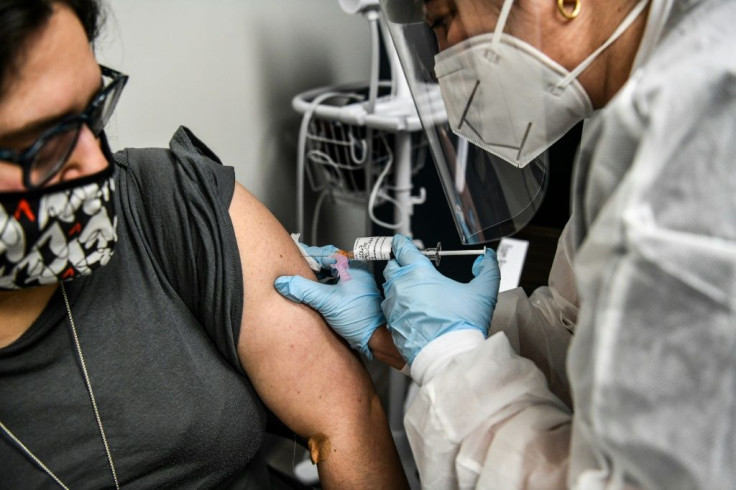With COVID-19 Vaccine Development Complete, Pharma Companies Look To Next Challenge
KEY POINTS
- As multiple COVID-19 vaccines finish clinical trials and look toward the next step, producers are bracing for complications in production and distribution
- The creation of vaccines has been delayed by shortages of industrial medical equipment
- Even if companies get their hands on the equipment they need, they're tempering expectations. Traditional vaccines have seen hiccups in the past and many of the vaccines going to market are using newer, unproven methods
As areas of the U.S. experience a second wave of COVID-19 cases, many Americans are looking toward new vaccines with hope. While these do put the end of the pandemic in sight, experts are warning the public to lower their expectations. A variety of complications around the production and distribution of the coronavirus vaccinations are expected.
Many of the companies leading the charge are small and inexperienced with large-scale production of complex drugs, the New York Times reports. That includes Moderna, one of only two companies to have completed phase three trials but has never actually brought a vaccine to market before. Novavax is another small company based in New England and had to delay its clinical trials due to complications around production.
Beyond the widely reported supply chain complexities, the supply chain for the supply chain has proven to be a bottleneck. The entire globe is jockeying for a limited supply of vaccine production equipment. This leads to shortages in the stainless steel vats and plastic liners used to produce the drug as well the vials and syringes it will be packaged in.
The U.S. government has scrambled to ramp up medical production supplies along with vaccine development, investing more than a billion dollars into companies that make the products they need.
Once manufacturers get their hands on the equipment, a lot can still go wrong. Some are producing drug types that have never been distributed before, and even those using more conventional methods are cautioning the public that the process can be disrupted. Prashant Yadav, an expert on medical supply chains for the Center for Global Development, pointed the Times toward a contaminated batch of flu vaccine in 2004 that resulted in half the U.S. supply being recalled.
“Manufacturing a biological product is a science and an art in some ways,” he said.

In the face of these complications and risks, governments and companies have been scaling back their production expectations. The goal stated toward the start of the vaccine development process was 300 million doses by the end of the year. Now experts expect 100 million, if that.
Many will go to foreign markets, and the Pfizer vaccine requires each recipient to take two doses. After prioritizing immediate production over scaling in order to expand its clinical trial, Pfizer will have enough to innoculate only 12.5 million Americans this year.
Still, the development and distribution of a vaccine so quickly is a landmark achievement. Paul Mango, deputy chief of staff at the Department of Health and Human Services, tried to reframe the timeline.
“Let’s not lose sight of the fact that never in the history of vaccine development has a vaccine been developed at scale in this period of time,” he said.
© Copyright IBTimes 2024. All rights reserved.





















